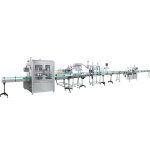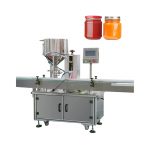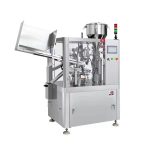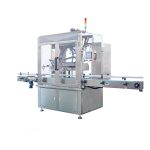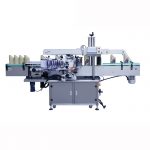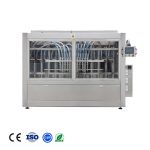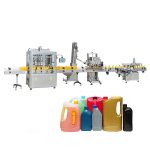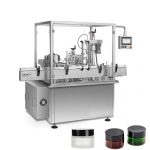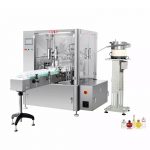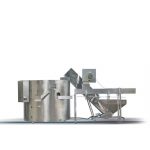Liquid filling is the process of transferring a precise volume of liquid from a container or source into a separate container or receptacle. This process is used in a variety of industries, including food and beverage, pharmaceutical, chemical, and personal care, to name a few. The goal of liquid filling is to ensure that the correct volume of liquid is dispensed accurately and consistently, without spillage or waste.
There are several different methods used for liquid filling, each with its own advantages and disadvantages. Some common methods include:
- Gravity filling: This method involves using the force of gravity to move the liquid from a source container into the receptacle. Gravity filling is often used for low-viscosity liquids, such as water or juice.
- Pump filling: This method uses a pump to move the liquid from the source container to the receptacle. Pumps can be mechanical or electrical, and can be used to fill containers of various shapes and sizes.
- Net weight filling: This method involves filling the receptacle with a specific weight of the liquid, rather than a specific volume. This method is often used for liquids that are difficult to measure by volume, such as those with high viscosities or those that are prone to foaming or aeration.
- Volumetric filling: This method involves filling the receptacle with a specific volume of the liquid, typically using a measuring device such as a syringe or a burette. Volumetric filling is often used for liquids that are easy to measure by volume, such as water or juice.
- Auger filling: This method involves using a screw-like device, called an auger, to move the liquid from the source container to the receptacle. Auger filling is often used for thick or viscous liquids, such as peanut butter or honey.
There are several factors that can affect the accuracy and consistency of liquid filling, including the viscosity of the liquid, the shape and size of the containers, and the type of filling equipment being used. To ensure accurate and consistent liquid filling, it is important to use the appropriate filling method and equipment for the specific liquid being dispensed.
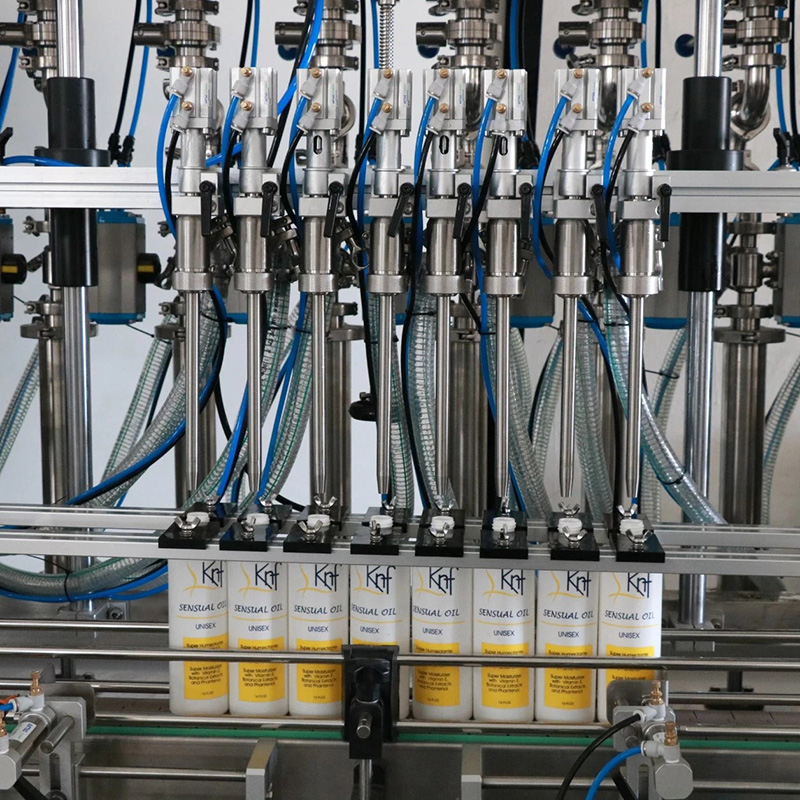
In addition to the different methods and equipment used for liquid filling, there are also various types of filling machines that can be used to automate the process. These machines are designed to fill containers with a precise volume of liquid, and can be used for a wide range of applications. Some common types of filling machines include:
- Overflow filling machines: These machines use a vibrating plate to control the flow of the liquid, filling the container to a predetermined level. Overflow filling machines are often used for liquids with low viscosities, such as water or juice.
- Gravity filling machines: These machines use the force of gravity to move the liquid from a source container into the receptacle. Gravity filling machines are often used for low-viscosity liquids, such as water or juice.
- Net weight filling machines: These machines fill the receptacle with a specific weight of the liquid, rather than a specific volume. Net weight filling machines are often used for liquids that are difficult to measure by volume, such as those with high viscosities or those that are prone to foaming or aeration.
- Volumetric filling machines: These machines fill the receptacle with a specific volume of the liquid, typically using a measuring device such as a syringe or a burette. Volumetric filling machines are often used for liquids that are easy to measure by volume, such as water or juice.
- Auger filling machines: These machines use an auger, or screw device, to move the liquid from the source container to the receptacle. Auger filling machines are often used for thick or viscous liquids, such as peanut butter or honey.
In addition to these types of filling machines, there are also various configurations and designs that can be used to suit different applications and production needs. Some common configurations include:
- Inline filling machines: These machines are designed to operate as part of a continuous production line, filling containers as they pass through the filling station. Inline filling machines are often used in high-volume production environments.
- Rotary filling machines: These machines use a rotating disc or carousel to hold and fill containers. Rotary filling machines are often used in high-volume production environments, and can be configured to handle various container sizes and shapes.
- Monoblock filling machines: These machines combine the filling and capping process into a single unit, allowing for efficient and seamless production. Monoblock filling machines are often used in medium to high-volume production environments.
Regardless of the filling method or equipment used, it is important to follow proper safety and hygiene guidelines to ensure the quality and safety of the filled products. This may include wearing appropriate personal protective equipment (PPE), following good manufacturing practices (GMPs), and regularly cleaning and sanitizing the filling equipment.
In conclusion, liquid filling is the process of transferring a precise volume of liquid from a source container into a receptacle. There are several different methods and types of filling equipment that can be used to automate this process, including gravity filling, pump filling, net weight filling, volumetric filling, and auger filling. It is important to use the appropriate filling method and equipment for the specific liquid being dispensed, and to follow proper safety and hygiene guidelines to ensure the quality and safety of the filled products.

